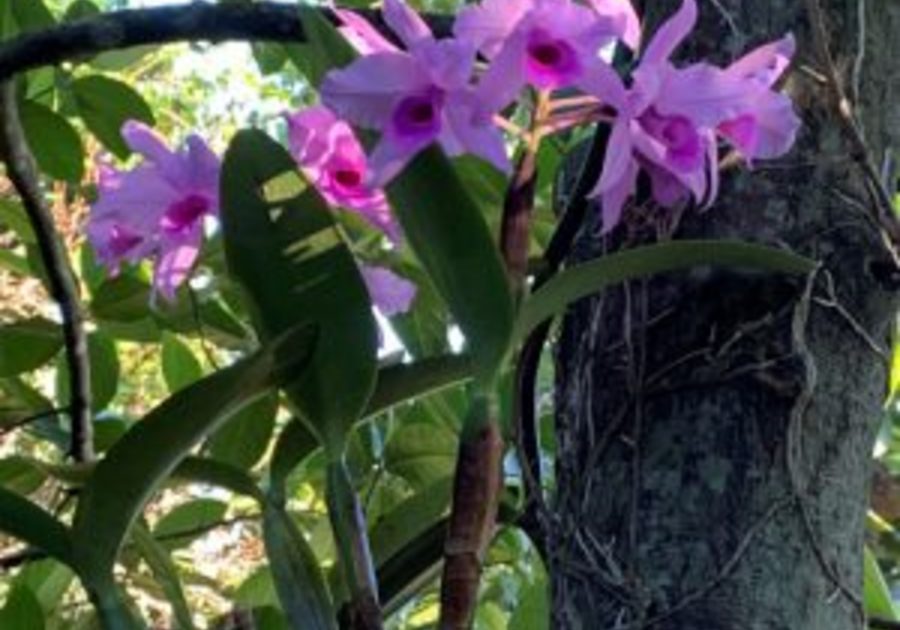We have all heard the saying: “Money doesn’t grow on trees!”, but here in South Florida, orchids grow on trees. Most people only see orchids growing in pots, but in nature, most of them grow on trees.
Epiphytes NOT parasites!
Epiphytes are a fascinating group of plants, which include many species from the bromeliad family, as well as the orchid family. Epiphytes are “air” plants that survive on moisture and nutrients in the atmosphere. They merely use trees as anchors where the right conditions of light and moisture are being met.
Orchid seeds are like dust. Once their seed capsule bursts, the minuscule seeds, so small they sometimes travel across oceans on air currents, will bump into a tree trunk, settle there, and germinate in a symbiotic relationship with beneficial fungi on the tree.
This is how they reproduce in nature. Picture a dandelion that goes to seed, and you will get an idea of how it works with orchids, except epiphytic orchid seeds won’t grow in soil, only on trees, wood and sometimes rocks, depending on the species.
Orchids are epiphytes; they attach to trees, but don’t actually penetrate the bark (which is the mark of a parasite). The best trees for orchids are those with bark that has good texture, and is “groovy”. This gives the seed a place to nestle and be protected while it germinates and grows.
We can imitate nature
If you have lots of trees, especially those with nice groovy bark, (even trees in pots on a patio), you can attach an orchid to them. Before you do, though, you need to know the kind of orchid you have and what it prefers: full shade, partial shade or full sun.
Know what they need
Most of the orchids you buy in the store will be Phalaenopsis, or Dendrobium; Phals prefer the shade, and Dens prefer more sun. Oncidiums need shade, and Vandas and Cattleyas more sun.
A good gardener is observant. In this case, take a good look at the tree you want to mount your orchid to. Determine which kind of sun it gets; does it get morning sun or afternoon, all day, or part of the day? Is the tree deciduous or evergreen? All of these factors will influence your decision on which orchid to put where.
This is how you do it:
1. If your orchid is in a pot, remove the pot and all of the potting materials. You should see some roots coming from the base of the orchid plant; this is where you want to tie it snugly to the tree.
2. Find an old T-shirt, pantyhose, or sock and cut some strips about 1/2-1 inch wide; then stretch it out to make a tie. Flexibility is important, so you don’t strangle the plant as it grows; eventually the tie will disintegrate and as the roots begin to grow on to the tree, the tie is no longer necessary at all. The length will depend on the branch or trunk you are tying it to. Give yourself enough to wrap it around a couple times.
3. Hold the orchid by the base where the roots start to grow; this is the best point to attach it. Just wrap it a couple times so that it is right up against the trunk or branch and there is no movement. They need to make firm contact. You will see how happy your orchid becomes, and how quickly it grows into a specimen plant that will surprise you year after year with colorful, carefree blooms.
Aftercare
Depending on your orchid species and observations, give it a spray with the hose during dry spells, or position it near a sprinkler, where it will get some additional moisture. It may not need any. My orchids have come through hurricanes unscathed and still blooming on their beloved trees.
Be sure to place your orchids where you can notice them blooming, because they will! If you have a failing orchid inside the house, tie it to a tree and watch it come back to health. Orchids are forever plants of unsurpassed beauty, bringing natural color and interest to our landscapes.



